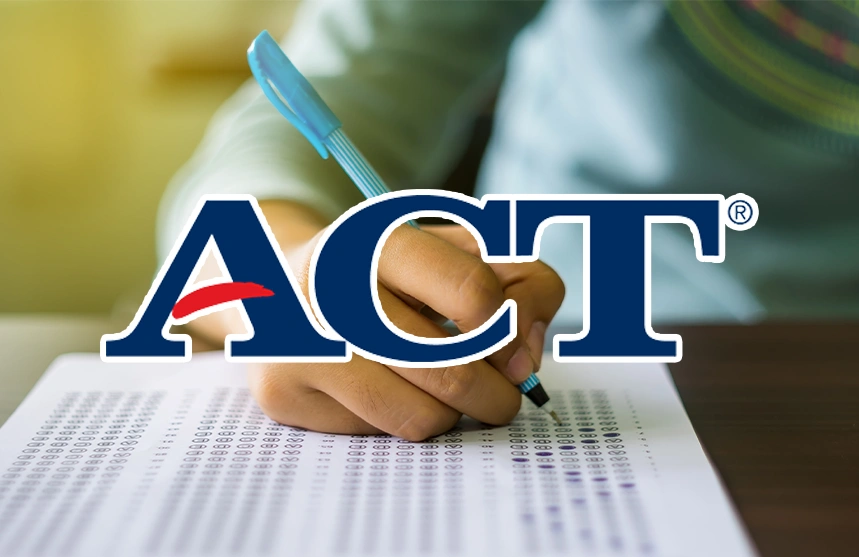Eligibility for OET Exam: Everything You Need to Know
GRE Exam Pattern 2025: Latest Section-wise Format, Duration & Scoring Explained

The Graduate Record Examination (GRE) is widely used by universities and colleges worldwide when assessing applications for postgraduate programmes, including master’s, PhD, and MBA degrees. It is designed to evaluate a candidate’s readiness for graduate-level study by measuring their skills in three key areas: Verbal Reasoning, Quantitative Reasoning, and Analytical Writing.
As a globally recognised and standardised test, the GRE helps institutions determine how likely an applicant is to succeed in their chosen field. Given the GRE’s significant role in the admissions process, it is essential for test-takers to understand the latest exam structure, scoring method, and effective strategies to achieve a competitive score.
In recent years, the GRE has undergone several updates, with the most notable changes implemented in 2023. These modifications were introduced to streamline the test-taking experience, improve content organisation, and more accurately reflect the skills needed for postgraduate success.
Whether you’re planning to apply for a master’s, MBA, or doctoral programme, having a thorough understanding of the GRE exam pattern for 2025 including section formats, time limits, and scoring can greatly enhance your preparation. This guide provides a comprehensive overview to help you approach the exam with clarity and confidence.
GRE Exam 2025 Key Highlights
The GRE General Test is used as an important criterion in graduate school admissions. The SAT is given at several test centres throughout the year, as well as online at home. The 2025 version of the GRE assesses a candidate’s abilities in three key skills.
- Verbal Reasoning
- Quantitative Reasoning
- Analytical Writing
The format of the exam is designed to measure critical thinking and problem-solving skills rather than detailed information in one area.
GRE Exam Full Form
Graduate Record Examination stands as the full name for the GRE exam. The GRE exam 2025 consists of two major test types, including GRE General in addition to GRE subject assessment. The GRE General stands as the primary GRE exam test type that admission requirements for master’s programmes utilise in 2025. Despite being optional, the GRE subject test serves as an additional academic credential which strengthens your application.
GRE Exam Duration
The GRE test started as a 4-hour continuous exam but ETS, its administrator, recently shifted the time to 1 hour and 58 minutes for all future sessions.
To lower test-taking fatigue throughout the GRE General Test ETS shortened its duration. Analytical writing with one mandatory essay now stands as the sole requirement, besides 26 challenges in each verbal and quantitative reasoning section under the revised GRE 2025 criteria. September 22nd marked the official start of operation for the test. The GRE 2025 format has cut the test duration to two hours from the GMAT‘s two hours and fifteen minutes and the LSAT’s three-hour allocation.
Latest Updates of GRE Exam Pattern 2025
Starting from September 22, 2023, the GRE is being changed to make the exam more efficient and helpful for students. The changes planned for 2025 are designed to make testing simpler and still accurately check how able each candidate is. Below you will find the key updates outlined.
- The Total Time of the Test: The GRE Exam now takes 1 hour and 58 minutes, a decrease from 3 hours and 45 minutes, so it is faster to complete.
- Total Questions: Now there are 55 questions on the revised GRE, which is fewer than before and makes the test more straight to the point.
- In the Analytical Writing section, the “Analyse an Argument” task has now been eliminated, and only the “Analyse an Issue” task remains.
- No longer needed, the GRE’s unused section has been eliminated, making the test simpler.
- There are fewer questions altogether: now, only 54, instead of the previous 58.
- In the Analytical Writing part of the test, there will only be one essay, not two.
- GRE Subject Tests are still offered in the same formats as the General Test: on a computer or at home.
- Starting September 2023, the time allowed for the Physics and Psychology subject tests will be adjusted to 2 hours.
- Discontinuing the Test, the Chemistry Subject Test ended its administration in April 2023 and is no longer available. For the next 5 years, the results of these tests will be used.
- Getting your official GRE scores is now faster, with results available in 8-10 days and not the usual 10-15 days.
GRE New Pattern 2025
Analytical Writing, Verbal Reasoning, and Quantitative Reasoning are the three major parts of the GRE test. While you must write in Analytical Writing, Verbal Reasoning and Quantitative Reasoning are both made up of multiple-choice questions. The change in the pattern means that the new GRE only includes one Analytical Writing task, which previously had two tasks. With this revision, the section is less complex and only has one writing assignment.
People can take the GRE in both a computer-based and a paper-based format. Only places with limited computer access offer the paper-based version of the test. GRE testing in India takes place only on computers for every test-taker. During registration, candidates can decide between computer-based and paper-based formats for the test since these versions share the same structure. With a computer-based exam, users are allowed to skip over questions and return to them afterwards, making answering more convenient.
As per ETS, a candidate is allowed to take the GRE once every 21 days and may not attempt it more than five times in any given year. With distance learning, learners can take tests more regularly and at their convenience.
| Details | GRE Subject Test – Maths | GRE Subject Test – Physics | GRE Subject Test – Psychology |
|---|---|---|---|
| Number of Questions | 66 MCQs related to UG-level study | 70 MCQs related to diagrams, graphs, and related topics | 144 MCQs related to this subject |
| Test Duration | 2 hours and 50 minutes | 2 hours | 2 hours |
| Question Distribution |
|
|
|
GRE Exam Pattern 2025
ETS has announced through the GRE Exam Pattern 2025 that the Graduate Record Examination includes Analytical Writing alongside Quantitative Reasoning and Verbal Reasoning sections. The exam presents 55 questions which students must answer across its three sections. Test-takers must answer their GRE questions within the 118-minute time frame. The examination sections evaluate postgraduate study preparedness through specific questions.
The GRE exam features three 3 sections where each contains five smaller sections. Every GRE exam question carries a positive score value because ETS does not penalise students for incorrect answers. A description of the GRE Test Pattern in 2025 follows below.
| Sections | Details | Duration |
|---|---|---|
| GRE General Test Duration | 1 hour 58 minutes | |
| Analytical Writing (One Section) |
One “Analyse an Issue” task | 30 minutes |
| Quantitative Reasoning (Two Sections) |
Section 1: 12 questions | 18 minutes |
| Section 2: 15 questions | 26 minutes | |
| Verbal Reasoning (Two Sections) |
Section 1: 12 questions | 21 minutes |
| Section 2: 15 questions | 23 minutes | |
| Total | 5 Sections: 55 Questions | 1 hour 58 minutes |
GRE Computer-Based Test Format
You will take the GRE General Test using the same format if you test at a centre or home. ETS started the GRE at Home option because of the coronavirus to allow students to take the test online instead of going to a centre. The online GRE gives those with travel or health limitations a good opportunity to take the test at home.
Numerous graduate schools and business programs across the world count on GRE scores to help make admission decisions. If you want to apply for an MS degree in the USA, UK, Canada, Australia, or any other top destinations, booking your GRE 2025 exam before the approaching dates is important.
GRE Analytical Writing Section
The Analytical Writing part of the GRE assesses your skills in forming well-structured thoughts in writing. Rather than include two as in the past, the pattern for 2025 only requires one task in the Data Interpretation section. It is intended to check if you can carefully study a subject and argue your point intelligently.
GRE Quantitative Reasoning section
This section tests your skills in using basic math and numerically solving problems. This section includes two different sections, and each has a set of questions you must answer in a certain amount of time. The main subjects discussed in this part are:
Basic math skills include: addition, subtraction, percentages, ratios, and various arithmetic concepts.
Here, knowledge of algebra, geometry, and data will be assessed with various questions.
Employing these mathematical ideas to solve issues you might encounter in real life is what you will be required to do.
The Quantitative Reasoning section allows the university to judge your mathematical reasoning, interpretation of data, and problem-solving abilities in real-life examples, so you have the basic math skills required for graduate study.
GRE Subject-wise Formats
Each of the GRE Subject Tests is taken in a purely electronic setting. Such tests measure your knowledge in certain subjects, with the overall time depending on what they test. The Mathematics Test takes 2 hours and 50 minutes, but the Physics and Psychology Tests are each given 2 hours. They are not formed with any separable and timed sections.
GRE Mathematics Test Format
The test is made up of approximately 66 multiple-choice questions chosen from the basic coursework at the undergraduate level. Here is how the questions are placed within the exam:
- About 50% of the questions involve calculus and how it is used, which is important for most mathematics majors.
- Subjects such as elementary algebra, linear algebra, abstract algebra, and number theory are the focus of 25%.
- Most of these questions focus on additional topics in math, normally taught to undergraduate students.
Physics Test Format
- This test presents 70 questions which use a 5-option format to examine materials including experimental graphs, physical descriptions and schematic drawings.
- The assessment intends to respond to three specific questions.
- These testing subjects demonstrate their understanding of fundamental principles at what level.
- This section describes the process through which students can make effective use of this knowledge base.
- Students who have accomplished the core physics courses during their first 3 years of undergraduate studies can resolve most questions in this test.
- The International System (SI) operates as the main unit measurement system throughout the test. A document with physical constants and SI unit conversion factors can be found in the test book.
- A committee of examiners established major content topic percentages based on undergraduate physics curriculum survey results across the country. The committee developed these numbers to represent their predictions about typical undergraduate program instruction distribution. This section shows major subtopics from each category, followed by their corresponding percentage values.
- The test encompasses questions primarily from this listing but also omits some material which has not been included in this listing.
Psychology Subject Test Format
You will have to answer around 144 multiple-choice questions on the Psychology Subject Test, and each question offers five potential solutions. They target a wide variety of psychological topics and are based on the essential subjects from undergraduate psychology studies. The main things that are measured in the test are:
Examples could include experiment details or graphs that help create various questions.
Symptoms and conditions in the test are described using the terms and categories outlined in the DSM-5-TR.
The assessment produces scores for the different categories listed below:
- Biological
- Cognitive
- Social
- Developmental
- Clinical
- Measurement/Methodology/Other
GRE Test Score Distribution
The total score on the GRE General Test is between 260 and 340, and you can get 130-170 in the Verbal Reasoning and Quantitative Reasoning sections. Analytical Writing questions are scored from 0 to 6 without being evaluated with the other sections. The scores that appear on the GRE Subject Test scale range from 200 to 990.
GRE Preparation Tips 2025
Graduate school admission in several nations mandates the standardised GRE exam for potential students. Every year, thousands of students from different countries participate in the GRE examination. Candidates need to achieve good GRE scores if they want to enrol in top universities and their leading degree programmes worldwide.
Success in the GRE examination requires students to establish an exam timetable coupled with proper resources and tactical preparation strategies. GRE sample papers are accessible as downloads to applicants who wish to speed up their preparation. The following pieces of advice represent the top GRE preparation strategies for 2025:
- Develop a personalised GRE preparation approach to design an individualised study framework.
- Students must conduct a thorough analysis of the GRE test pattern to determine their weaknesses more clearly.
- Build vocabulary consistently.
- Learn time management.
- Include physical and mental workouts.
- Familiarity with the GRE exam pattern serves as a fundamental base to reach your target GRE score. A contract with GRE preparation must start with awareness of the exam pattern.
- Tests administered by the GRE can experience pattern modifications without any warning. The latest pattern developments for the GRE should be tracked by prospective students who want to perform confidently during their GRE test.
Conclusion
In the end, the process for graduate school admission involves the GRE exam for programmes in many parts of the world. Knowing the test format and how it will be scored can help you do better on the GRE. If applying to graduate school is in your plans and you could use some help with the process, MetaApply IE can assist.
MetaApply IE helps you organise your study for the GRE and handle your application process to graduate schools. The platform provides personal help and easy ways to track your progress. Use MetaApply IE today to help you pass the GRE test easily and smoothly complete your application.
Frequently Asked Questions
In total, the GRE exam will last about 1 hour and 58 minutes. This consists of the Analytical Writing section (taking 30 minutes), the Verbal Reasoning sections (18 and 23 minutes), and the Quantitative Reasoning sections (21 and 26 minutes).
Your preparation and knowledge of the exam style will influence how hard the GRE is for you. It measures abilities such as critical thinking, problem-solving, and reasoning, and these can be improved through focused study.
A range of 130 to 170 points is used to score your Verbal and Quantitative Reasoning abilities on the GRE. They assign a score of 0–6 to the Analytical Writing section separately. The Verbal and Quantitative Reasoning scores are added together to get the total score, which can go up to 340.


















































